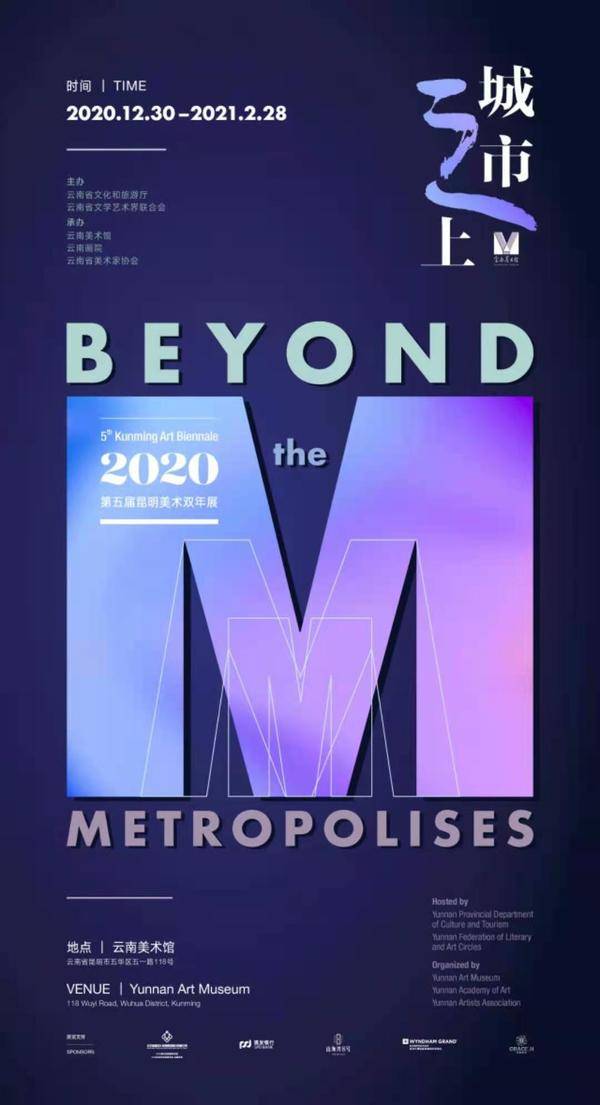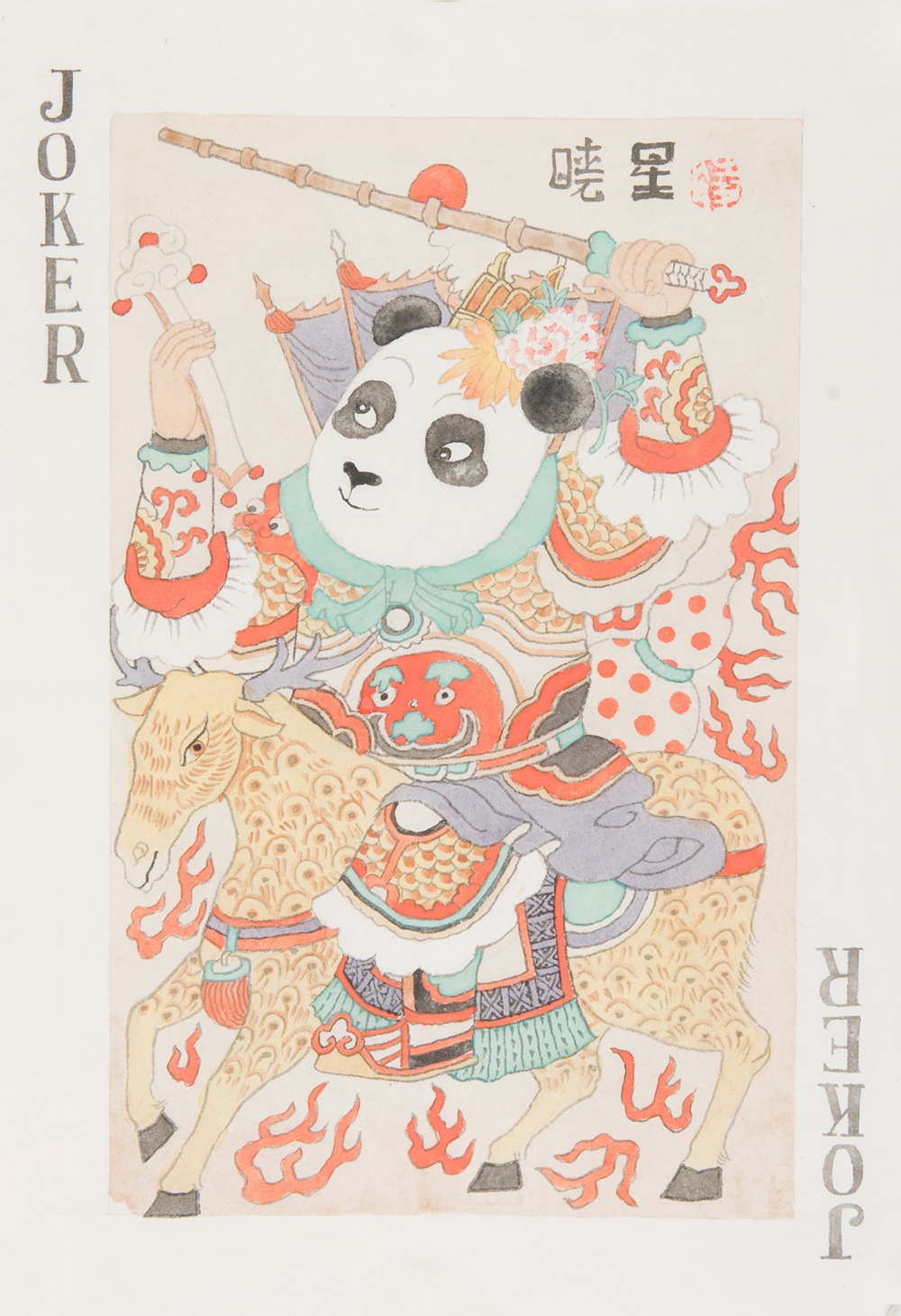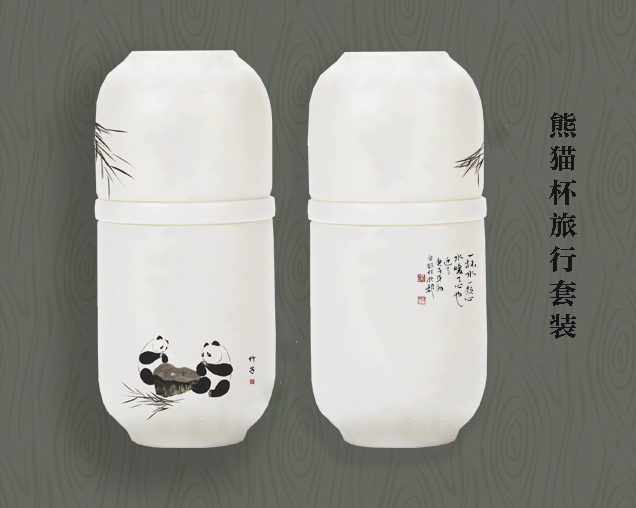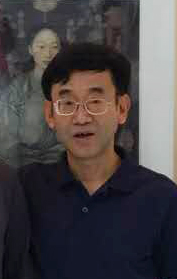燃爆来袭“城市之上”第五届昆明美术双年展
时间:2020-12-30 | 来源:artmmm |
“城市之上”—2020·第五届昆明美术双年展 海报

城市之上
总策展人
中国美协美术理论委员会主任
博导/尚辉
城市是现代文明的象征。
地理学上的城市,是指地处交通便利的自然环境、并覆盖有一定面积的人群和房屋的密集结合体。经济学上的城市,是一个坐落在有限空间地区内的各种经济市场——住房、劳动力、土地、运输等相互交织在一起的网络系统。现代城市概念是工业革命促使大量农牧民逃离土地涌向工业中心,从而形成的工业生产与消费的聚集地。从这个角度看,中国现代城市的产生起自19世纪中叶,而大规模的城市化进程则发生在20世纪80年代以后。美术学上的城市形象,并不单纯是对城市建设场景的描绘,而是对大批农民进城打工形象的捕捉。那些作品所聚焦的疏离土地的农民来到城市而形成新型劳工阶层的形象,也真正标志了中国在20世纪末发生的城市化革命。
中国经济的快速增长都高度浓缩在中国大陆境内一座座拔地而起的规模化城市建设上。以低碳与智能为目标的现代城市,创造了人类崭新的生活方式。原工业遗址改造的创意产业园、美术馆,逐步取代原有的城市标志而成为城市最富活力的新的文化地标。视觉艺术因多媒体的普遍运用,既获得前所未有的大众化发展,也改变了架上艺术的单一模式。城市是视觉艺术的创造园、生产机器和消费黑洞。从手工性的绘写到数字模拟,从美术馆的珍品展陈到网上浏览,从现实场域的装置营造到云端储存、隔空披阅,美术学上的城市形象已不完全是社会景观的再现,而是人类想象生活与想象能力的探索,似乎那些云端之上的东西在维系着城市生活中的人的精神,似乎那些飘渺的东西在真正支配着人们的心灵、情感与行为。
有关美术学中的中国城市化形象,这里提供了三种最富代表性的城市样板——上海,深圳,昆明。
作为中国现代城市的起源,上海从滩涂渔村在170余年间,从多国租界而迅速生长为国际化的大都市。中国最早的工业集群、产业工人、通信报业、西洋文化等都促使这座城市的生长与国际接轨,成为中国最富象征意义的现代城市模型。绘画作品中所追溯的老外滩形象,是民国时代东方巴黎的缩影;而这座城市的移民文化色彩,也造就了艺术家对外来美术的天生亲和性,国际意识似乎是这座城市与生俱来的一种文化本能。
作为中国改革开放的前沿城市,深圳今年迎来建市40周年。在这短短的40年,深圳创造了人类创建现代都市最短却最富活力的奇迹,这里成为全球最重要的数字产业基地与设计之都。新移民城市带来文化融混的巨大活力,从“都市水墨”概念的提出,到“深圳国际水墨双年展”的创建,再至“深圳水彩画国际双年展”“深圳观澜国际版画双年展”“中国(大芬)国际油画双年展”等双年展群的创设与举办,深圳的经济腾飞带动了文化艺术发展的新组合与新拓展。
作为中国西部重要的中心城市之一,昆明早在两千多年前就成为“南方丝绸之路”的重要驿站,这座古城至今都维系着东亚大陆与中南半岛、南亚次大陆各国间的经济贸易往来,是中国面向东南亚、南亚开放的门户城市。作为云贵高原少数民族聚居地的昆明,这里始终保存着多民族文化习俗,并滋养了新时期以来中国现代性美术的变革。不论本土美术家,还是中国其他地域的美术家,都曾在这片红土绿地与民族传统文化中获得中国美术现代性突进的灵感与路径,美术作品中的城市变迁体现了多民族文化交融的特质,传统与现代、乡村与城市、自然与时尚往往在同一个桌面打开共享。
这个展览以“城市之上”为主题,通过美术学讲述了这三座城市的故事。来自中国现代城市的起点、来自改革开放城市的前沿和来自古代南方丝绸之路门户的驿站,让上海、深圳、昆明这三座不同历史时空的城市构成一种独特而意味深长的连接,从而揭示了中国城市化进程在不同地理环境、不同文化背景形成的不同样态。
展览分为“历史文脉”、“当代景观”、“云端世界”三个单元结构。
“历史文脉”试图以历史轴线展开三座城市的历史变迁。古滇文明延续的民俗传统可能依稀留存在不多的古宅老街的砖石间,老外滩的万国建筑群最形象地诠释了民国时代殖民文化的繁华,而深圳的小渔村早已被一座座拨地而起的楼宇覆盖,最晚的记忆是中英街嘈杂的洋货贩卖。艺术图像努力恢复曾经的记忆,这种记忆图像早已不单纯是城市历史的客观记录,而是从当下视角对城市演变的文化发掘,最可贵的是其中夹杂着每个生命个体对历史的认知与对城市的体验。
“当代景观”是对当下这三座城市的现实呈现。这里有人们最熟悉的跌宕起伏的城际线,有人头攒动的商业街,有密集的住宅区和拥堵的街道,而这些城市在人们精神烙印的景观,则是时尚服饰所掩映的焦虑、困顿、倦怠和疲惫的面孔。城市化所堆砌的高度发达的物质文明不断刺激着人类欲望的增长,便捷、快速、准确的劳作模式却滋生着肆无忌惮的人性分裂,性别差异的缩小与错置、身份等级的拉大与教条、自然生态的失衡与毁灭,艺术家所呈现的当代城市景观从人性与文明的关系延伸到对人类命运的关切与反思。
“云端世界”展示了城市文明进入数字时代的种种可能。艺术家的想象为人们呈现了“5G时代”所建立的“云端城市”。在现代文明体系如此发达的时代,人类居然没有逃脱新型冠状肺炎的大规模侵袭,人类建立的现代疾控体系,似乎在一夜之间被摧毁。但5G网络像一张生命的“网”罩在城市之上,人们通过这张无形的“网”开始了地面的封闭与天空的打开的生活。虚拟世界在疫情时代成为人们非正常生活回到现实的路径,虚拟改变了现实,乃至替换了现实。艺术家为此而展开的想象力与创造力,意味着“城市之上”给予人类未来的福音。
公元2020年的最后一天,让我们祭奠在这场病疫中逝去的所有生命;这里所有的艺术作品,都铺垫了迈向云端城市的阶梯。
“城市之上”是审美的仰望。
Beyond the Metropolises
SHANG Hui, Chief Curator of Kunming Art Biennale, Director of Fine Arts Theory Committee of China Artists Association, Doctoral Supervisor
Metropolises are symbols of modern civilization.
In geographic terms, metropolises refer to a densely populated area with clusters of buildings, accessible geographical locations and convenient transport systems. From an economics perspective, metropolises are a network of markets – housing, labour, land and transport – that are housed in a certain area. A modern metropolis was forged when a great number of farmers and herdsmen were forcibly displaced and driven into industrial centres amid the industrial revolution, hence creating the clustering of industrial production and consumption. In this sense, Chinese metropolises started to take shape in the middle 19th century, while the massive urbanization process did not kick in until the 1980s. The image of metropolises, from an angle of fine art, is more than simple depiction of urban construction - it also captures images of migrant workers from rural places. A new working class, namely farmers who came to work in cities and therefore became disassociated from land, captured in artworks symbolizes the urbanization started in China at the end of the 20th century.
Fast economic growth in China has been largely reflected in massive urbanization that has been taking place within its border. Modern metropolises, with a goal to realize low-carbon and smart development, have enabled new lifestyles for people. In the metropolises, creative parks and art galleries that are transformed from former industrial buildings are gradually replacing the old landmarks as new, dynamic cultural landmarks. Thanks to the wider use of multi-media, visual art has made progress at a scale that we have never seen before, which has overhauled the dominance of easel art. Metropolis serves as creative host, production machine and consumption black-hole of visual art. Be it the manual artwork or the digital-analog, the gallery displaying or the online browsing, the real-life installation or cloud-based storage/remote review, images of metropolises from an art perspective has a broader meaning than a simple recreation of the social landscape, which has been expanded to imaginary exploration in terms of both depth and capacity. It appears that what is kept on the cloud is sustaining the spirituality of men and women living in cities. The illusion seems to have ultimate control over people’s minds, emotions, and behaviours.
Three representative Chinese cities, Shanghai, Shenzhen and Kunming, have been selected to best convey the images of metropolises from the perspective of fine art.
Shanghai, the very start of a modern Chinese metropolis, has grown to be a global metropolis from a foreign settlement region about more 170 years ago when Shanghai was nothing but remote fishing villages. The earliest industrial clusters, workers, newspapers and western cultural communities in China, pushed this city to integrate with the global community and grow into a significant model for Chinese metropolises. Images about the Bund in paintings provide a glimpse into the "Paris of the East" in the period of the Republic of China; the immigrant culture in this city also contributes to the innate inclination for extraneous art. Global perspectives seem to be an inherent cultural instinct of the city.
As a pioneer of reform and opening up, Shenzhen Special Zone celebrated its 40th anniversary. In just four decades, a miraculous record in creating a dynamic, large metropolis has been set. Now, Shenzhen is among the most important hubs of the digital industry and design sector. This new immigrant city has unleashed tremendous power for cultural integration. Through the concept of “Beyond the Ink” and a host of art biennial events including Shenzhen International Ink-wash Biennial, Shenzhen International Watercolor Biennial, China-Guanlan International Print Biennial and Dafen International Oil Painting Biennial, the economic growth in Shenzhen has stimulated new combinations and development in culture and art.
Over two thousand years ago, Kunming was an essential hub along the “Southern Silk Road”. Now, it is a key city in western China. With a long history, the city has been sustaining economic and trade ties between the East Asian Continent, Indo-China Peninsula and South Asian Subcontinent, as a key gateway to Southeast Asia and South Asia. A locus of ethnic groups living in the Yunnan-Guizhou Plateau, Yunnan has accumulated rich reserves of cultures and customs of multiple ethnic minorities and nurtured the reforms in Chinese modern fine art in a new age. Here, inspired by this land rich in beauty, local artists and those from other regions in China have found paths for breakthroughs in modern arts. The revolution of cities reflected in art manifests the integration of diversified cultures, where tradition and modernity, countryside and urbanity, nature and fashion can be shared on the same facet.
Themed as “Beyond the Metropolises”, the Kunming Art Biennial narrates the stories of three metropolises from an angle of fine art. The three cities with distinctive histories, Shanghai as the start of the modern metropolis in China, Shenzhen as the pioneer of reform and opening-up and Kunming as the gateway of Southern Silk Road will generate a unique and significant connection. In doing this, we set to unveil diversified patterns under different geographic conditions and cultural contexts over the course of urbanization in China.
The Biennial includes three sections - “History and Literature”, “Modern Spectacle” and “World in the Cloud”.
The first section “History and Literature” displays the transformation of three cities in history. Folk customs that have been kept alive since ancient times in Yunnan can still be found in rare remaining buildings and blocks, while the Bund is the direct visualization of the colonial culture in the period of the Republic of China. The small fishing village that Shenzhen used to be has been replaced by the high-rises and the memories of the earliest days of the city may be found in the images and sounds of the vendors in Zhongying Street. Art images set to recover the memories that we have of the past. Those images serve a purpose greater than an objective recording of the cities – they help discover cultural elements in city revolution from an up-to-date perspective. What are the most valuable lies in each individual memories and experience of the history and the cities.
“Modern Spectacle” offers a realist presentation of three metropolises as they are now, with artworks about the up-and-down skylines that everyone is familiar with, busy commercial centres, dense residential areas and congested streets. Images of metropolises in the emotional world are manifest in forms of anxiety, fatigue and depression of people dressed in style. Extremely abundant material life in today’s cities has stimulated growing desires, while the fast-paced work models that are all about efficiency and accuracy have split human nature. In the Modern Landscape depicted by artists, narrowing gender differences and even misplacement, growing class disparity, rigid status, imbalance and destruction of natural ecology constitute an extension from the humanity-civilization relationship to the reflection on and concern for our fate as human beings.
The section "World in the Cloud" envisions possibilities of metropolises into a digital age. Using an imaginary approach, artists create a “city in the cloud” at a “5G age”. In such an advanced civilization of today’s world, mankind was surprisingly gripped by the COVID-19 pandemic. Overnight, the modern health system seems to have collapsed. Then the 5G network provides a life network beyond the cities, an invisible network that helps mankind re-establish connections with the world and break away from the isolation. The virtual world is a path for us to get back on our feet amid the pandemic. The virtual has changed the reality and even replaced the reality. From this perspective, artists envision and present the blessing on mankind brought by “Beyond the Metropolises”.
On the last day of 2020, we pay tribute to all who have lost their lives to the pandemic. Here all the artworks serve as stairs leading up to metropolises in the cloud.
“Beyond the Metropolises” is an aspiration of aesthetics.


>相关报道:
- ·张维:祝贺励志作家张宏森当选中国作协主席[2025-11-21]
- ·张旭参加镇原县书画家义卖救助病危下岗职工活动[2025-10-17]
- ·张维:祝贺并学习第八届兰亭奖各位获奖者和评委[2025-10-15]
- ·作家张宁长篇小说《土匠》出版发行[2025-10-14]
- ·张维美术国画和书法作品入选《中国职工书法绘画精品选》[2025-10-12]
- ·2025年张维加入香港美术家协会[2025-10-12]
热点新闻
艺术家推荐
更多...曹辉 1952年生于成都。中国美术家协会会员,国家一级美术师,四川美术家协会理事、四川美术家协会中国画艺委会人物画专委会特邀委员、成都中国画会副会长、成都大学中国东盟艺术学院客座教授,硕士生校外导师,成都惠民职工画院顾问。上世纪八、九十年代,其连环画作品多次获得全国大奖。1999年国画《川妹子出川图》获文化部全国第八届“群星奖”银奖;1990~1998年连续在法国举办五次个人作品展。2011年获第一届四川省工笔画学会作品展暨中国工笔画名家邀请展银奖。2014年作品《锦江花月夜》参加四川省诗书画院三十年创作成果展•全国书画名家作品邀请展。2015年作品参加在中国国家画院美术馆举行的“新中国美术家系列·四川省国画作品展”;2016年在四川美术馆举办个人作品展;2016年12月作品受邀参加“回望东坡“2016四川中国书画创作学术邀请展;2017年3月作品受邀参加水墨四川 ——名家作品邀请展;2017年5月作品《锦官城外》受邀参见“守墨鼎新”四川省政协书画研究院作品展;2017年8月作品《年夜饭》参加在香港会议展览中心举办的全球水墨画大展;2018年1月27日在香港云峰画苑总部举行“昔日情怀--曹辉艺术作品展”,并由此开始为期一年的全国巡展。 曹辉1982——2002年发表作品: 《神奇的武夷山悬棺》连环画《奥秘》画报 1982年4期 《给上帝的一封信》连环画《连环画报》 1983年3期 《神秘的大旋涡》连环画《奥秘》画报 1983年2期 《野人之谜新探索》连环画《奥秘》画报 1984年1期 《女子足球运动》连环画《奥秘》画报 1985年5期 《女子马拉松》连环画《奥秘》画报 1985年2期 《小酒桶》连环画《连环画报》 1984年3期 《神秘的石室》连环画《奥秘》画报 1984年4期 《战神之墙》连环画《奥秘》画报 1985年9期 《笔录奇观》连环画《奥秘》画报 1985年11期 《古代美容》连环画《奥秘》画报 1986年6期 《一个女研究生的堕落》连环画广东《法制画报》 85年1、2期 《一个投案者的自述》连环画广东《法制画报》 85年17期 《ET外星人》连环画《奥秘》画报 85年4、5期 《孟卖大爆炸》连环画《奥秘》画报 1987年5期 《热爱生命》连环画《奥秘》画报 1989年1期 《驼峰上的爱》连环画《奥秘》画报 1989年9期 《青鱼》连环画《连环画报》 1985年3期 《珍珠》连环画《连环画报》 1986年3期 《菩萨的汇款》连环画《连环画报》 1985年9期 《小耗子》连环画《连环画报》 1986年10期 《水手长接替我》连环画《中国连环画》 1986年10期 《征服死亡的人》连环画《中国连环画》 1987年6期 《小酒桶》 连环画中国农村读物出版社再版 1985年11版 《给上帝的一封信》 连环画中国连环画出版社再版 84年3期 《日本国技.相扑》 连环画《奥秘》画报 1986年1期 《圣地亚哥刑场》 连环画《奥秘》画报 1987年10期 《古诗意画》 国画 四川美术出版社 1987年5版 《人蚊之战》 连环画 科学文艺 1988年1期 《跳水 》 连环画 《万花筒画报》 1988年2期 《他们与“森林野人”》连环画《奥秘》画报 1988年3期 《圣地亚哥刑场》 选刊 《中国连环画艺术》 1988年3版 《关于圣地亚哥刑场的通信》 论文 《中国连环画艺术》 1988年3版 《阿拉斯加的奇遇》 连环画《奥秘》画报 1989年1期 《祭火》 连环画 《中国连环画艺术》 1989年6版 《辟古奇谭》 连环画《奥秘》画报 1989年6期 《玛丘皮丘》连环画《奥秘》画报 1989年9期 《医生.夫人.闹钟》连环画《奥秘》画报 1990年1期 《南.马特尔之谜》连环画《奥秘》画报 1990年10期 《泉神娶妻》连环画《奥秘》画报 1991年1期 《中国民族民俗故事》 连环画明天出版社出版 1991年1版 《船儿水上飘》 国画 蓉城翰墨 1991年12版 《萨克奇野人的俘虏》连环画《奥秘》画报 1991年10期 《圣经的故事》 连环画四川美术出版社 1992年1版 《雪莲洞探秘》连环画《奥秘》画报 1992年2期 《艾科沟之谜》连环画《奥秘》画报 1992年5期 《印度河文明之谜》连环画《奥秘》画报 1993年1期 《干冰杀人案》连环画《奥秘》画报 1993年5期 《白色幽灵》 连环画 《中国连环画》 1993年4期 《悬棺之谜新解》连环画《奥秘》画报 1993年8期 《冤家变亲家》连环画《连环画报》 1993年10期 《一棵遗落在荒原的种子》连环画《连环画报》 1994年6期 《世界名人传记.艺术家卷 米勒篇 》 连环画浙江少儿社 94年一版 《巴仑克之谜》连环画《奥秘》画报 1994年10期 《辟古奇尼》连环画《奥秘》画报 1995年5期 《豹狼的日子》 上、下连环画 中国连环画出版社 1992年10版 《冬之门 》连环画《中国连环画》 1995年8,9期 《神农架野人今安在》连环画《奥秘》画报 1997年1期 《寻觅玛雅古城》连环画《奥秘》画报 1997年10期 《白鹤梁探秘》连环画《奥秘》画报 1998年1期 《尊严》连环画《中国连环画》 1998年2期 《神秘的南美大隧道》连环画《奥秘》画报 1999年2期 《名医入地彀》连环画《连环画报》 1999年6期 《神秘的英国巨石圈》连环画《奥秘》画报 1999年5期 《蜀王陵出土记》 连环画《奥秘》画报 2000年8期 《定数》连环画《连环画报》 2000年10期 《印山大墓揭秘》连环画《奥秘》画报 2001年5期 《冰封印加之谜》连环画《奥秘》画报 2001年8期 《“狼人”之谜》连环画《奥秘》画报 2002年1期 《扣开通往远古的大门》连环画《奥秘》画报 2002年4期 曹辉艺术年表: 2020年1月在成都举办“陌上谁人依旧 · 曹辉民国风人物画展” 2019年11月作品受邀参加四川省诗书画院主办的“回望东坡•2019四川中国书画学术邀请展” 2019年8月中山(南区)云峰画苑于举办《昔日情怀-曹辉艺术作品展》 2018年10月作品受邀参见“天府百年美术文献展” 2018年1月27日在香港云峰画苑总部举行“昔日情怀--曹辉艺术作品展” 2017年8月作品《年夜饭》参加在香港会议展览中心举办的全球水墨画大展 2017年5月作品《锦官城外》受邀参见“守墨鼎新”四川省政协书画研究院作品展 2017年3月作品受邀参加水墨四川 ——名家作品邀请展 2016年12月作品受邀参加“回望东坡“2016四川中国书画创作学术邀请展 2016年6月 在四川美术馆举办个人作品展 2016年5月 作品《绣娘》参加成都重大题材美术创作工程开篇之作——南方丝绸之路美术作品展 2015年11月 作品《故园旧梦》入选第二届“四川文华奖”美术书法展,并获三等奖 2015年11月 作品参加由四川省艺术研究院主办的“2015四川中国画创作学术邀请展” 2015年10月 作品《西厢待月》参加在重庆举办的“中国精神•民族魂——中国知名画派邀请展” 2015年10月 作品《故园旧梦》参加“从解放碑到宽巷子”2015成渝美术双百名家双城展 2015年9月 作品参加成都市推广天府画派办公室主办的“传神写照•2015水墨人物画邀请展” 2015年8月 特邀参加成都市推广天府画派办公室主办的“心里画儿•中国画邀请展” 2015年5月 特邀参加由四川省美协和四川省美协中国画艺委会联合主办的“四川省中国画人物画作品展” 2015年4月 参加在中国国家画院美术馆举办的“新中国美术家系列•四川省国画作品展” 2014年 作品《锦江花月夜》参加四川省诗书画院三十年创作成果展•全国书画名家作品邀请展 2014年7月 三幅作品参加“南方丝绸之路”主题创作展 2011年5月 在成都东方绘画艺术院(现在的二酉山房)举办“曹辉人物画作品展” 2011年3月 《曹家大院•家训》获首届四川工笔画学会作品展暨中国工笔画名家邀请展银奖 1999年 国画《川妹子出川图》获文化部全国第八届“群星奖”银奖 1999年 连环画《名医入彀》获《连环画报》“十佳”优秀绘画奖 1998年8月 在法国圣雷米市BAYOL画廊举办第五次个展 1996年 作品《寻找北斗》获四川省优秀作品奖 1995年7月 在法国圣雷米市BAYOL画廊举办第四次个展 1993年9月 在巴黎“中国之家”画廊举办第三次个展 1993年 连环画《白色幽灵》获《中国连环画》“十佳”作品奖 1991年5月 在巴黎亚洲民俗艺术博物馆举办第二次个展 1990年3月 在巴黎亚洲民俗艺术博物馆举办第一次个展 1990年 连环画《圣地亚哥刑场》获《奥秘》画报1985~1990年“十佳”优秀作品奖 1989年 连环画《圣经的故事》《青鱼》入选第七届全国美展,获四川省优秀作品奖 1986年 连环画《罗瑞卿的青少年时代》获第三届全国连环画评奖三等奖 1981年 国画《新户头》获四川省优秀作品奖详情>>



 保存
保存 打印
打印



最新评论
已有0条评论,共0人参与